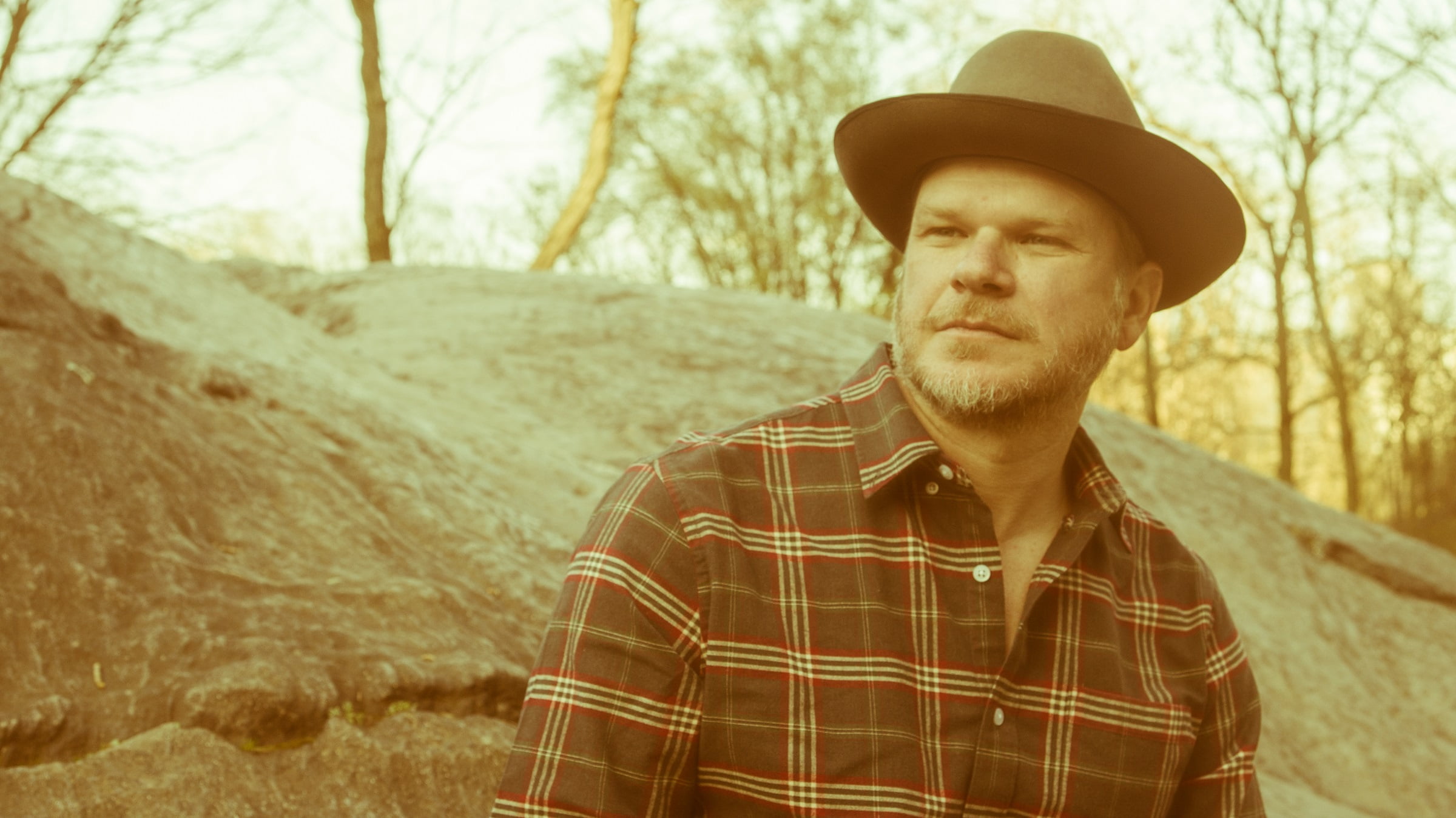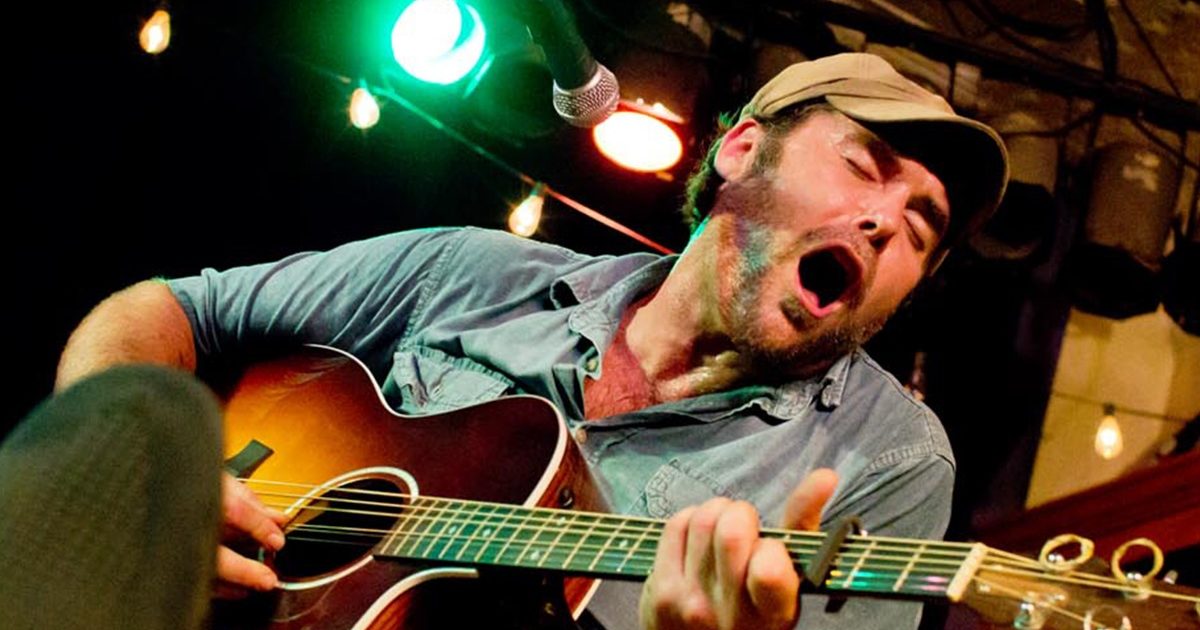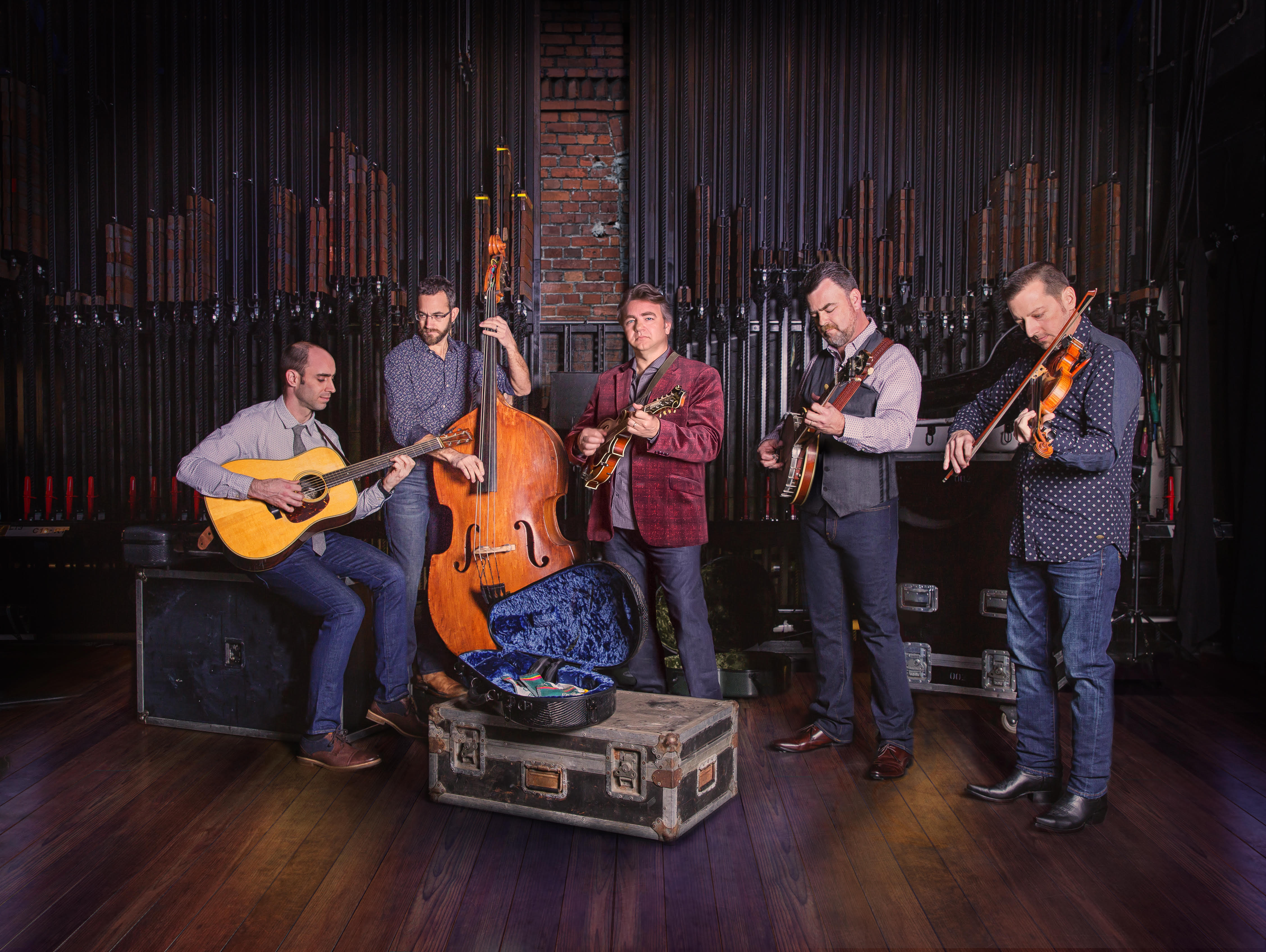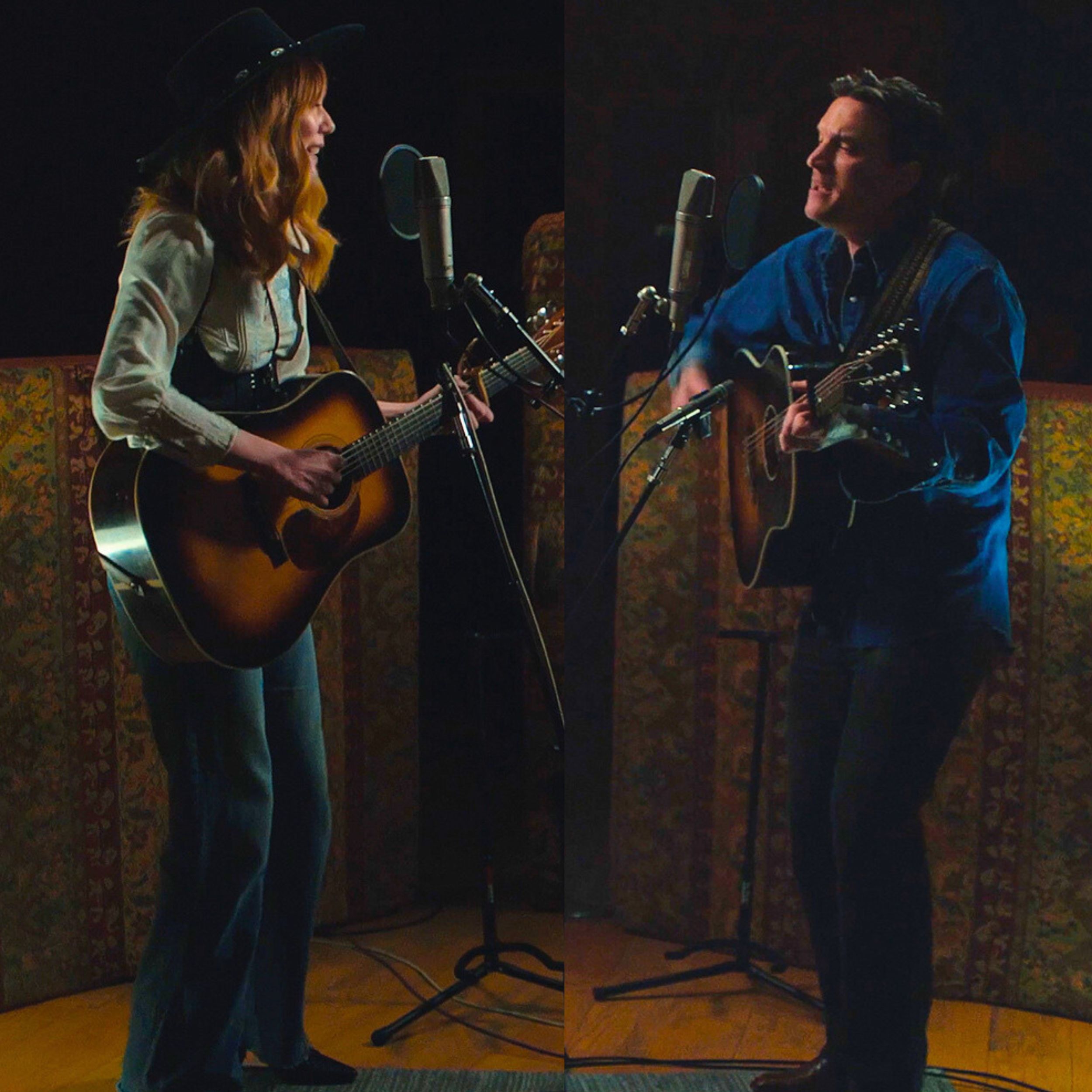There are two songs about dying on Jason Eady’s new I Travel On, but he insists this isn’t a downer album. Neither the contented “Happy Man” nor the rambunctious “Pretty When I Die” flinch as they depict the end of life, but Eady says the songs “put a positive spin on it. I think they’re both very positive songs. Live life to the fullest. Leave it all on the table when you go.”
Positivity was the conscious theme of the Fort Worth-based singer-songwriter’s seventh record, yet these songs aren’t naïve or blindly, blandly uplifting. What makes I Travel On so poignant and so memorable is Eady’s willingness to look something like death right in the face and find that silver lining. “It’s going to happen to everybody, so why not talk about it? It doesn’t have to be this unspoken thing that’s sad and depressing. Life is life and death is just a part of it. That shouldn’t be ignored.”
It helps that those two songs, along with every other one on the album, are expertly and even jubilantly picked and strummed and bowed and plucked and sung by Eady’s road-hardened touring band, with special guests Rob Ickes and Trey Hensley. “This album,” Eady explains, “is very specific to our last year. We traveled so much during that time, and we listened to Rob and Trey’s two records, which were a big part of our lives at that time. So it seemed like the perfect thing to call them up and see if they wanted to be on the record. These two guys were with us out on the road, even if they didn’t know it.”
Just as Eady writes within the parameters of positivity on I Travel On, the band played only acoustic instruments: guitars, bass, drums, Dobro. Their limited arsenal forced them to be more creative, to find new ways to use their instruments. As a result, the playing on these songs is somehow both loose and tight, technically precise yet lively, focused but eclectic. “We all sat down, miked everything up, and just went for it. There are no punches, no overdubs, nothing. When you hear something on the record, that’s what happened.”
The record is a document of getting lost out in America, gauging the climate of the country touring out-of-the-way places like Calaveras County, California, which gets its own song. It’s about finding silver linings in the gray clouds overhead. It’s about traveling on. And it has one of the finest album covers of the year: an evocative and psychedelic image that was one of many subjects he discussed with the Bluegrass Situation.
First of all, can you tell me about “Calaveras County”? What about that place inspired you to write that song?
That song is a mixture of some things that happened last year and another thing from my childhood that I always wanted to get into a song. We played a festival there last summer, which was the first time I had been there. I fell in love with the place. We were touring up the California coast, and every place was blazing hot. But it was breezy and nice and the weather was beautiful. The people were great. We had a chance to catch our breath and relax. The night before the show we had a big bluegrass jam. When we were leaving, it just struck me how awesome the place was.
Of course, the name Calaveras County doesn’t hurt. It just sounds good. I wrote the song when I got off the road. I can’t really write much on the road, so I just collect notes and thoughts. When I get home, I sort it all out. And the first thing I did after that tour was sit down and write that song.
What’s the other story? The one from your childhood?
There’s a verse about the man in the multicolored Volkswagen bug. That’s a true story from my childhood. I was maybe 6 or 7 and my dad was driving us through the Mojave Desert. We had run out of gas, and it was thirty miles to the next gas station. This was before cell phones, not that cell phones would have done us any good out there. So my dad had to hitchhike to get gas, while we sat in the pickup on the side of the road. People just kept flying by him and flying by him.
The guy who finally stopped was an old hippie who looked like Santa Claus. He was driving a Volkswagen bug and every single panel on the car was a different color. He gave my dad a ride into town, and then he gave him a ride back and wouldn’t take any money for gas. This guy goes sixty miles out of his way just to get us a tank of gas! That always stuck with me. My dad called me the other day and told me he couldn’t believe that I actually remembered that story.
How could you forget something like that?
It was my first experience of not judging people on appearances. This guy was nothing but helpful. Completely selfless. I’ve always wanted to get him into a song. I tried before to find ways to mention that story, but it never fit until now. It just went with the spirit of “Calaveras County.” The people up there had a similar spirit to them: Anything you needed, they would run into town to get it. They would do anything to make sure you enjoyed your stay in their town. The song fell into place pretty quickly.
I get the sense that most of these songs were written pretty quickly.
I did something this time around that was pretty terrifying. We booked the studio before I had the songs. So I gave myself a deadline to write this record. We got off the road in October, then we went into the studio in December. I wrote them all in those two months in between. It was a challenge, but I’ll tell you what I love about it: This is a very intentional album. These songs were all written in the same space, so it makes for a very cohesive record. I didn’t have to just take the best twelve songs I’d written in the last two years. Everything was written to be on this record.
A lot of the songs relate to things we did over the last year. I didn’t realize that until later. I called it I Travel On because that’s what we did. That’s where the spirit of the record comes from, and I think every song is about getting from one place to another, whether it’s physically traveling or mentally shifting ideas. “Always a Woman” is a good example. It starts off very tongue-in-cheek, very dark, but by the end of the song you’ve traveled from that idea to a very different idea. You’re using the same words but putting a positive spin on them. You move from one position to another in that song.
It inverts the country convention of the woman doing wrong to a man.
Well, I didn’t want to be negative on this record. That’s not where I’m at in my life, and the world doesn’t need any more of that right now. I wanted this to be a positive record. With that song, I didn’t know where it was going after that first verse, but I knew I wanted to take it somewhere different. I didn’t want it to be a dark song, so I had to find some way out of that.
You’ve mentioned that you recorded these songs completely live in one take, with no overdubs. Was that a difficult process? Were there any songs that proved especially hard to get through?
“Always a Woman” for sure. It’s a one-chord song, and I knew when I wrote it that it was going to be tricky. How do you make a one-chord song interesting for four minutes? I just do the same picking pattern for four minutes. Who wants to hear that? For that reason it was the last song we recorded. It was a daunting thing, but I think they all did an unbelievable job of finding ways to change it from verse to verse and add dynamics. Kevin Foster on fiddle did these things where he muted the strings but still rubbed the bow against them. Rob Ickes did something similar on Dobro. It sounds like a distorted electric guitar. I think some people just assume that’s what it is, but it’s all acoustic. I think everybody thrived under that constraint. It made us all more creative.
Way off topic, but this is one of my favorite album covers of the year. What can you tell me about that image?
It’s one of my favorite things I’ve done since I’ve been working in music. For years I had this concept, but I’m not a visually creative person. I can barely draw a stick figure. But I had this idea and I took it to a couple of graphic artists. It’s this universal concept: Everything starts from many, then filters down to a single point, then explodes back out to many again.
You’re going to have to elaborate for me.
Genetics is an example. It took an infinite number of people to get to me being here right now, and from here I’ll have offspring who’ll have offspring and it multiples back out. Events are the same way. All of these events in the history of everything have made this conversation we’re having right now possible, and then from this conversation will come other things that will spread back out. It’s a universal idea. It applies to everything.
But the only visual idea I could come up with was an hourglass, which I didn’t want it to be. But then Casey Pierce, who did the video for “Why I Left Atlanta” and documented the sessions for I Travel On, he’s a graphic artist and his work is very abstract. That’s exactly what I was looking for. I explained the concept to him and what you see on the cover is his first draft. As soon as I opened the email, I couldn’t believe it. It’s the coolest thing I’ve ever seen. He got it all. He got the vagueness of it.
It’s very different from your typical country album cover.
Yes, but Casey made it look like a road, like you’re going down the road and these clouds are in front of you. The road is disappearing into the horizon, which goes along with the title of the record. That’s the beauty of what he did. There’s a lot going on inside of it. It’s art.
Photo credit: Scott Morgan






